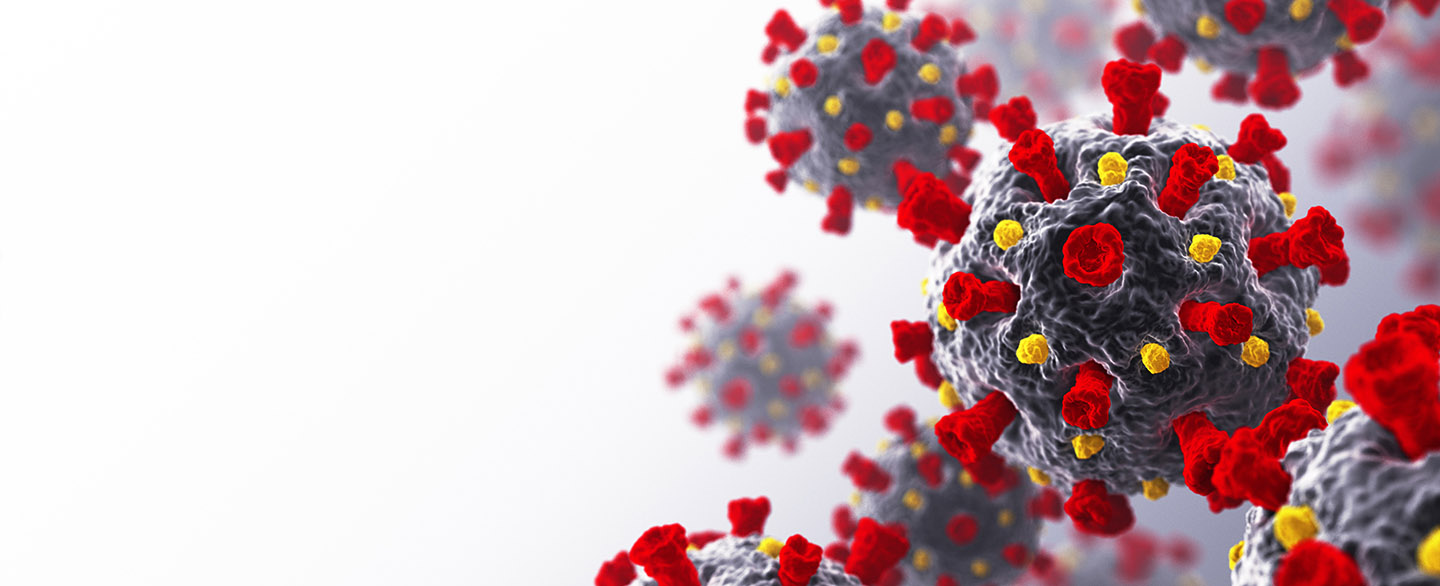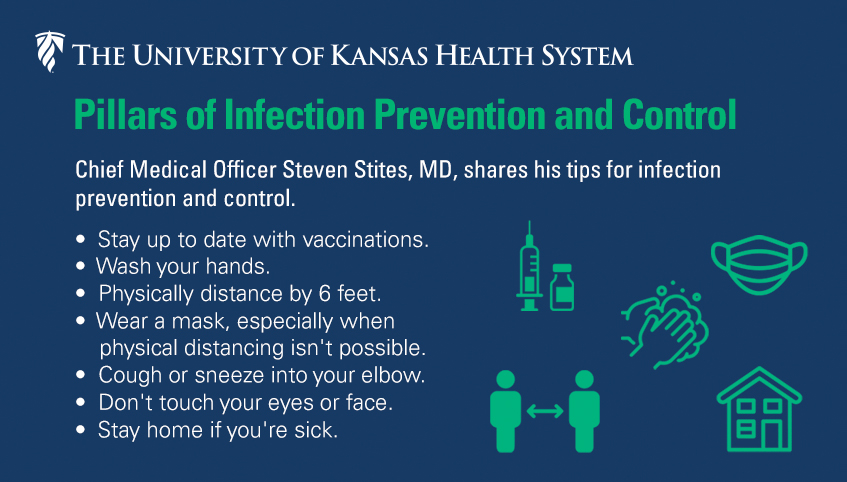- Home
- Patients and Visitors
- COVID-19 Updates
COVID-19 Updates

At The University of Kansas Health System, we are here to help our patients, staff, family, friends and communities navigate the COVID-19 pandemic. This page contains answers to common COVID-19 questions – from testing to care and prevention.
For visitor information, visit our Hospital Visitor Guidelines page. For current masking guidelines, click here.
To keep you and your family safe and fight the spread of COVID-19, continue to follow the pillars of infection prevention, such as frequent hand washing. Vaccination is recommended for people 6 months and older. If you haven’t already, consider scheduling your COVID-19 vaccination through your primary care provider or your local pharmacy.
Bookmark this page to get the latest updates on all things COVID-19 at the health system.

Explore COVID-19 updates
How to fit your mask
Dana Hawkinson, MD: Improved fit will help reduce the risk of catching coronavirus and help reduce the spread. Currently on the CDC website, they do have that it is important to make sure that you improve the fit of your mask as much as possible. And you can do that by tying the mask or improving the fit of the surgical mask.
So first I want to make sure that I have my hand sanitized with alcohol gel. And the easiest way to do it is to just pick it up before you place it on your face. At that point in time, you just fold it in half. So it's kind of folded like a hot dog bun. Next, you work towards tying the loops. And the easiest way to do this is to do it by two finger breadths, tying the loop around, and you really want to try to get it as close to the mask as possible. But as you can see, we've just tied a simple little knot. Now to the other side. The next step is to kind of get it to form to your face initially. And that is by using the nose and the metal band, and then also pulling it down around your chin.
So obviously you can see here, there is still some gaps. The last part is trying to fold in those open gaps, fold it in around your face so that you can reduce the amount of open space around the mask and the face as much as possible. But once you do that, you should have as little amount of gap as possible. Again, this is all to improve the fit, to improve any open air exchange. If you are expressing the disease or the droplets out into the community, or if you are inhaling as well, this will help.
Take good care
Following several simple practices will help you and your loved ones reduce risk of infection. But if you or someone close to you does feel ill, it’s important to recognize symptoms and seek care responsibly. Review these guidelines on prevention, symptoms and supportive care.